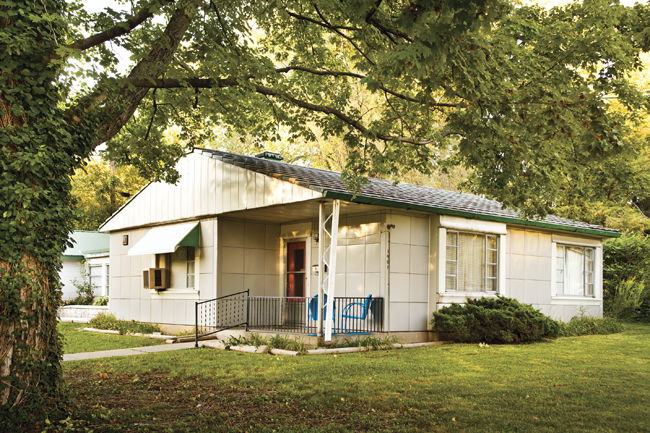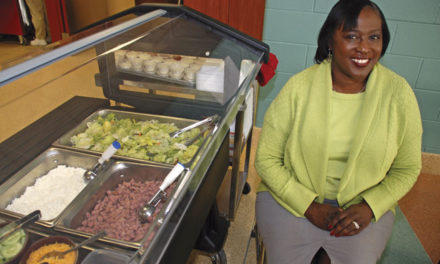BY NANCY HILLER
Bloomington can boast a wide variety of Midcentury Modern architecture, from modest single-story ranches to slick tri-levels with cantilevered porches. But scattered among them are several eccentric Lustron homes—enameled-steel creations that represent a radical, if short-lived, innovation in the history of American residential design.
The Lustron was devised in response to a shortage of housing immediately after World War II. Residential construction had still not recovered from its sharp decline during the Great Depression; incredible as it may seem today, the bulk of the country’s housing stock dated to the 19th century, and many houses lacked electricity and plumbing. Meanwhile, nearly three million married veterans were poised to come home, and members of Congress argued that expecting them to move back in with their parents would be an insult after the sacrifices they had made.
Carl Strandlund, a Swedish-born engineer, devised the Lustron proto-type in 1946 while working for the Chicago Vitreous Enamel Product Company. Strandlund had masterminded the company’s transition to the wartime production of tank armor. Now, with a loan from the federal Reconstruction Finance Corporation, he seized the opportunity to patent a promising post-war product: a system of panels that could be assembled to make a house and that he firmly believed would help solve the nation’s housing crisis.
With two to three bedrooms and about 1,000 square feet, each Lustron was made almost entirely of steel, inside and out; even the roof consisted of steel panels. The entire package of more than 30,000 parts—complete with wooden built-ins, finished in enamel to match the streamlined, automobile-inspired aesthetic—was shipped by truck to construction sites, then assembled according to instructions in a 193-page manual. Four basic models were available—the Esquire, Westchester, Newport, and Meadowbrook—in a limited range of muted colors, such as pale blue, pastel yellow, tan, and light gray. The Lustrons sold for less than $10,000 and were promoted as being “maintenance free.” They were not.
Some 2,680 Lustrons were sold before the business went bankrupt in 1950. Between 1,500 and 2,000 still stand today. Bloomington has several, including one at 1901 E. Maxwell St. (pictured). Though in plain view, Lustrons don’t jump out; their diminutive proportions and modest colors make them less visible than their unusual materials would suggest.*
Nancy Hiller is an award-winning author of books and articles about architecture and historic preservation. Her most recent book is A Home of Her Own (IU Press).












You might be interested in my project, Lustron Stories – Americans at Home which is currently on exhibit at PUBLIC Gallery in Louisville and will be a the Ohio History Connection in May. More info at http://www.lustron-stories.com
Chuck